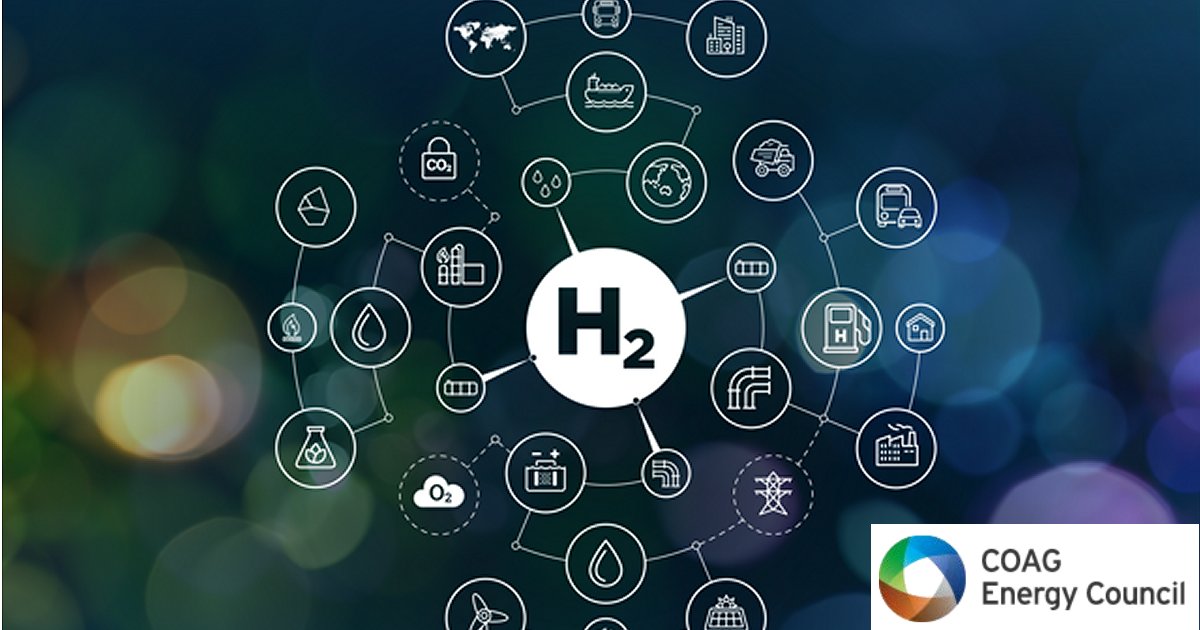Energy Ministers met in Perth on Friday for the first COAG Energy Council meeting in more than 11 months. Here’s some of what happened.
First up, it won’t be quite so long between COAG Energy Council drinks next time around – another meeting has been scheduled for March next year.
“Technology-Neutral” Hydrogen Plan Adopted
Ministers backed the National Hydrogen Strategy, supporting the development of a “clean, innovative, competitive, technology-neutral and safe hydrogen industry” and established a the Hydrogen Working Group to develop it.
The “technology-neutral” bit is a worry. While hydrogen can be produced using renewables such as wind and solar energy (green hydrogen), it can also be produced with fossil fuels such as gas (blue hydrogen) and filthy brown coal (brown hydrogen).
The excitement over hydrogen, particularly Australia’s potential for exports, may not justified. Back in January this year, SQ’s Ronald detailed why he believed there won’t be strong demand for Australian hydrogen and even if there was, it won’t be highly profitable.
Last Friday, The Australia Institute said potential export demand as cited by various corners including the Federal Government may be overstated by a factor of up to 11.
“Prematurely establishing a hydrogen export industry based on highly inflated demand figures may lock out the cleanest form of hydrogen, using renewable energy and electrolysis, because the technology isn’t cost competitive at this stage,” stated Richie Merzian, Climate & Energy Program Director at TAI.
Mr. Merzian says rushing into hydrogen production could result locking in of fossil fuels for decades more.
COGATI
COGATI stands for the Coordination of Generation and Transmission Investment. It’s the brain/bastard child of the Australian Energy Market Commission (AEMC).
According to the Smart Energy Council, it’s possibly the worst from a long list of stupid energy policy ideas we’ve seen in Australia over the last decade.
The Council explains COGATI as:
“Where transmission is constrained, charge (or tax) any newcomers (read renewables), for the fact the existing generators (read coal fired power stations), will be constrained further and make the newcomers pay the existing generators to compensate them for that loss.”
The Clean Energy Council is also unimpressed with COGATI, writing to all Ministers ahead of the meeting advising they should not endorse the AEMC’s approach. The CEC’s response to the discussion paper on the COGATI proposed access model can be found here.
The COAG Energy Council meeting communique doesn’t go into any great detail on COGATI discussions, but mentions Ministers agreed the AEMC should present its work for consideration by Council by March 2020. So, they’ve got some time to get it sorted.
Energy Security Board
The Energy Security Board (ESB) has been tasked with undertaking an immediate review of the NEM electricity reliability standard to ensure that it is fit for purpose, plus to gauge its benefits and costs to consumers.
The ESB is to provide advice for decision in March next year on immediate measures to ensure reliability and security of the electricity system. It has also been asked to accelerate its work on short term actions to progress renewable energy zone connections.
According to a Victorian Government release, Ministers were also eager to see AEMO’s Integrated System Plan (ISP) actioned sooner rather than later. ESB has been told to get cracking on draft rules to help fast-track the Plan and provide these for discussion and agreement at the next COAG Energy Council meeting in March.
More from the COAG meeting can be found here.


 RSS - Posts
RSS - Posts



Michael,
Hydrogen has the enrgy density to mimic fossil fuels for all facets of the economy. For this reason it should be considered as it by far the responsible energy for meeting a decarbonised economy.
Further, you are correct about it being technology nuetral, this will allow for the technology to drive the solution. Unfortunately to date this has not been the case, in particular for dispatchable generation and synchronous generation to compliment renewable generation and a stable grid.
There is discussion for hydrogen and nuclear to be carbon free generators, however there is limited debate of what this means and how to get there.
Would be good to read more of this than parochial responses.
Removong carbon is the objective, then all technology should open for consideration. Hydrogen makes sense when energy = H2+O, which ends up as H2O.
“So, as the feral minister for destroying the environment, Mr taylor, what is your take on this push for Australia to produce hydrogen?”
“Dur, the answer is obvious, isn’t it? All of these increasing people using solar panels, are draining more and more energy from the sun, and, it is going to run out of power, in the next few years. So, we have to mine more coal, to send to the sun, and, we have to produce lots of hydrogen, by burning more coal, and, send the hydrogen to the sun, in single use plastic shopping bags, to keep the sun fuelled. And, I have all of the forged documents that I need, to prove it.”
”
A spokesperson for Cr Moore issued a statement saying her office had been contacted by NSW Police “regarding its investigation into the alleged make and use of forged documents by the Office of the Minister for Energy and Emissions Reduction, Angus Taylor”.
”